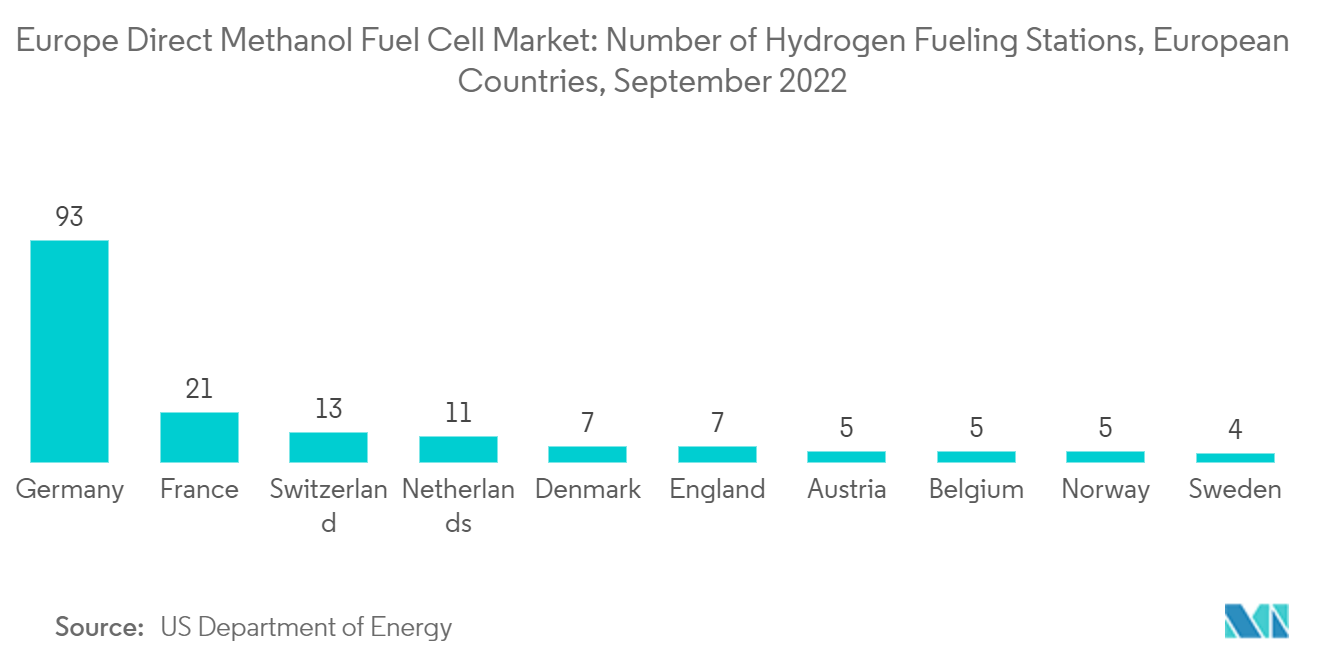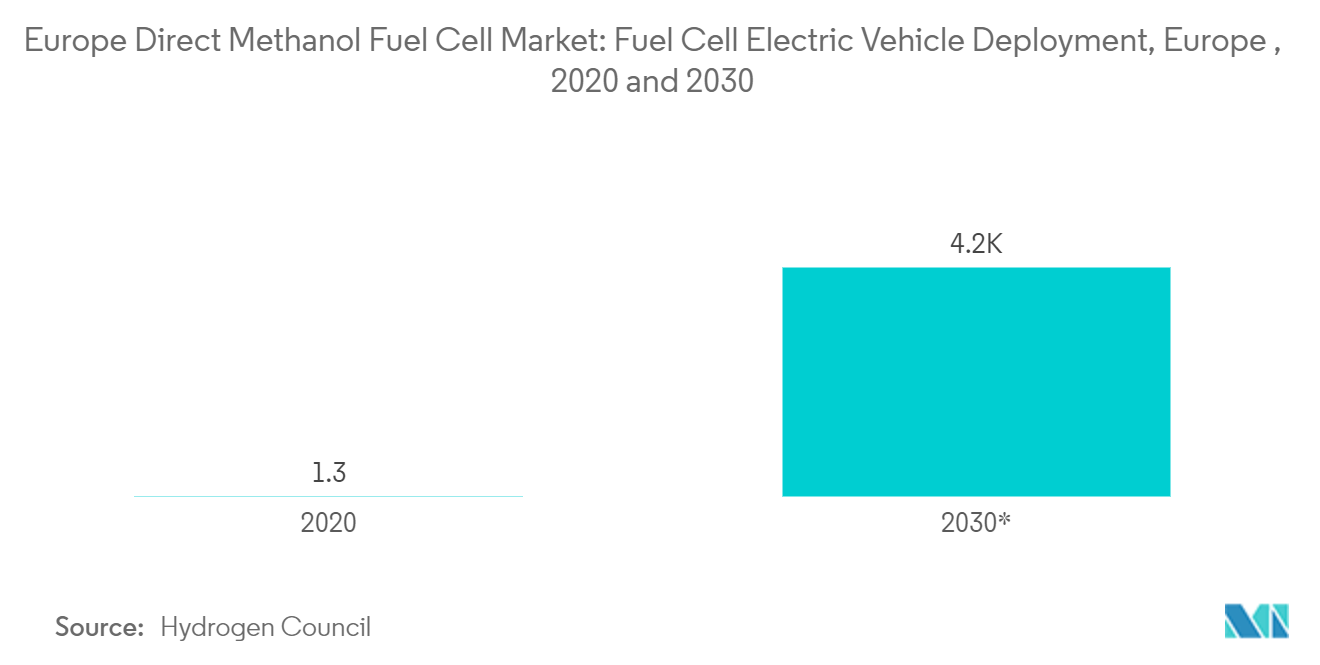Market Trends of Europe Direct Methanol Fuel Cell Industry
Government Initiatives and Increasing Private Investments
The direct methanol fuel cell market witnessed significant growth in the last two years, mainly due to the introduction of government initiatives in key markets and increasing investment support from the private sector.
Germany has the most significant number of hydrogen fuel stations in Europe. As of September 2022, 93 operational hydrogen refueling stations were in the country. This was followed by France, with 21 such stations.
In June 2017, Queen Elizabeth II announced the introduction of the 'Automated and Electric Vehicles Bill.' The bill called for greater funding for fuel cell vehicles and hydrogen infrastructure. After the bill's introduction, the country's hydrogen and fuel cell industry has seen impressive developments. Furthermore, in February 2020, the government announced USD 30 million in funding for five projects focused on hydrogen production.
In Europe, the market is driven by the JIVE (Joint Initiative for Hydrogen Vehicles), which seeks to deploy 139 new zero-emission fuel cell buses and refueling infrastructure across five countries by 2020. The JIVE started in January 2017 and is co-funded by USD 34 million grant from the Fuel Cells and Hydrogen Joint Undertaking (FCH JU). The project consortium involves 22 partners from seven countries.
Further, JIVE2 started in January 2018, and on a combined basis, the JIVE2 projects are expected to deploy around 300 fuel cell buses in 22 cities across Europe by the early 2020s.
Moreover, a new project in January 2020 to improve the power density of PEM fuel cells was taken up by the consortium consisting of two transport OEMs (Fuel Cell Powertrain and BMW), a fuel cell MEA supplier (Johnson Matthey Fuel Cells), one research institute (SINTEF) and two university institutes (Chemnitz University of Technology and IMTEK at the University of Freiburg).
The project's objective consists of understanding the charge, mass, and heat transport mechanism in new generation PEM fuel cell MEA (Membrane Electrode Assemblies) for automotive applications. The project has funding of USD 2.5 million and will run from 2020-2022.
In January 2021, Johnson Matthey (JM), has won a new multi-million-pound agreement to provide 400,000 Direct Methanol MEA (Membrane Electrode Assemblies) fuel cell components to SFC Energy AG (SFC), a global leader of hydrogen and direct methanol fuel cells for stationary and mobile hybrid power solutions. The agreement is considered from February 2021 for a duration of over three years.
Therefore, government initiatives and increasing private investments are expected to drive the Europe direct methanol fuel cell market in the coming years.

Germany to Dominate the Market
Germany is promoting the deployment of fuel cell electric buses in conformation while reducing the GHG emission in the country. The regional transport authority, Regionalverkehr Köln, was awarded USD 7.9 million by the government to purchase 30 FCEBs and two hydrogen refueling stations (HRS). The country also aims to promote the deployment of 1000 stations by the end of 2030. Such initiatives are expected to significantly support the deployment of fuel cells in the region in the coming years.
As per Hydrogen Council statistics, there were about 1,300 fuel cell electric vehicles (FCEVs) in the European fleet in 2020. Projections indicate that this number could exceed four million units by 2030.
Germany's National Hydrogen Strategy, which the government approved in June 2020, aims to assume global responsibility for reducing emissions through energy generation from hydrogen, primarily by making hydrogen competitive, pushing cost reductions, and establishing hydrogen as an alternative energy carrier.
The strategy also aims to establish hydrogen as a raw material for industry sustainability by switching current production based on fossil energies to renewable energies while supporting research and training qualified personnel to get industrial-scale solutions to application maturity by 2030 systematically.
In July 2021, SFC Energy AG announced the launch of the next generation of its hydrogen fuel cell solution. The EFOY Hydrogen Fuel Cell, 2.5 power solution, combines a reliable, robust, and environmentally friendly form of power generation with the highest possible connectivity and ease of use.
Therefore, with various government initiatives launched by Germany, Europe is expected to dominate the direct methanol fuel cell market during the forecast period.

